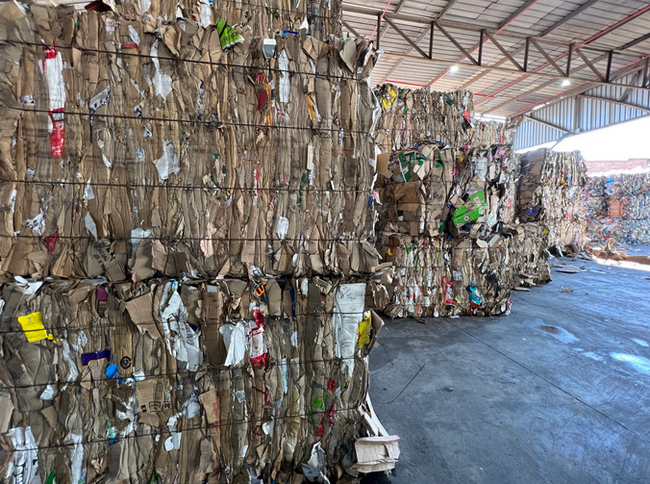Thanks to the waste separation efforts of conscientious citizens, businesses, schools and the greater recycling industry, South Africa recycled just less than 1.3 million tonnes of paper and paper packaging in 2022. If baled and laid out, this would cover 161 rugby fields.
The same amount would weigh as much as 208,553 mature African elephants, or fill 1,502 Olympic -sized swimming pools. “More importantly, it saved 3.8 million cubic metres of landfill[i] space, and ensured that the paper industry could re-use the fibre in cardboard boxes, grocery bags, egg boxes, newspapers, and tissue products,” explains Samantha Choles, communications manager of the Paper Manufacturers Association of South Africa (PAMSA).
“We are certainly seeing more paper packaging entering the market as several brands are shifting to paper, especially in primary packaging - the packaging that contains the item,” says Choles.
Packaging sustainability trends are affecting demand for paper with big brands reducing plastic in their packaging, or at least aiming for single material packaging that is locally recyclable.
During 2022, South Africa produced 1.96 million tonnes of pulp, paper, board and tissue, importing just over one million tonnes and exporting 540,000 tonnes. This put the apparent consumption[ii] of paper and paper packaging at 2.45 million tonnes.
Choles adds that toilet paper and other tissue products are neither collectable nor recyclable, and therefore excluded from what is available for collection. In 2022, two million tonnes were deemed collectable. This excludes 410,000 tonnes of secondary corrugated packaging comprising export fruit, wine and other products. Similarly, PAMSA includes the corrugated packaging, containing imported goods, which therefore become available for the recycling market.

Recycling susceptible to market volatilities
The paper recycling rate for 2022 was 61%. While this is lower than previous years, it’s still comparable with more developed nations such as the United States (68%) and Europe (70%). “Recycling statistics should not be viewed in isolation year on year,” cautions Choles, adding that a lower recycling percentage does not mean that South Africa is recycling less paper. In volume terms, 2022 was higher than previous years.
Recycling is a flow-process, affected by market trends and volatilities, with paper grades taking six to nine months to move through various steps in the supply chain, such as manufacturing and conversion, packing, transit, consumption, and eventually collection and recycling. The latter entails collection by various entities, sorting, then repulping and finally manufacturing and conversion into new paper products. Thus the recycling rates will be affected by how quickly the volumes of paper pass through the market.
Consumers and businesses can do more
The global ‘Trend Tracker Survey 2023’, spearheaded by Two Sides, questioned more than 10,000 consumers from 16 countries on their preferences and opinions regarding various packaging types, their attributes and their impact. Some 62% of respondents said they recycle paper and paper packaging at home, and 78% understand the types of products that need to go into the recycling bin. “This is great news and we hope this will improve as awareness around waste separation and recycling increases,” adds Choles.
Clean and dry paper is essential. Informal recycling collectors and waste traders will earn a better rate if the paper is of good quality. “Consumers must keep wet waste away from dry recyclables. If paper and cardboard get wet, it starts to degrade making the items less recyclable. Good fibre in, better products out,” explains Choles.
Separate bins in the home, and putting a box or bag of clean recyclables on the pavement for recycling collectors are two ways to make a difference, and keep products out of landfill.
“Even with a five-year average paper recycling rate of 67%, we hope that the extended producer responsibility regulations and the various industry programmes will help close the gaps between South Africa’s technical capacity to recycle, infrastructure to recover and collect, and consumer awareness, education and behaviour change,” says Choles.
Recycling closes the circle, cultivated trees keep it going
The ‘Trend Tracker Survey 2023’ also revealed that just less than 70% of South African consumers surveyed believe that only recycled paper should be used - from printing to packaging to tissue products.
“Many people don’t realise that paper fibres are not infinitely recyclable as they shorten after each “recycle” and do not bond well to make new paper. Fresh virgin fibre from sustainably farmed wood will be added to strengthen the pulp recipes.”
Recycling is just one branch of paper’s circularity. From the farming of 850 million trees on 676,000 hectares for pulp and papermaking to the beneficiation of process “waste” into lignosulphonates and other biochemicals, the paper industry is very much a circular economy.
[i] Based on one tonne of baled paper/paper packaging equivalent to three cubic metres.
[ii] Apparent consumption = Local production plus imports less exports
